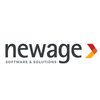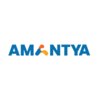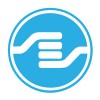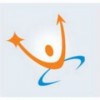
i
NewAge Software & Solutions
Filter interviews by
NewAge Software & Solutions Interview Questions, Process, and Tips
NewAge Software & Solutions Interview Experiences
3 interviews found
(5 Questions)
- Q1. What is test plan ?
- Ans.
A test plan is a document outlining the approach, resources, schedule, and scope of testing activities for a software project.
Defines the objectives and scope of testing
Outlines the test strategy and approach
Includes details on resources, schedule, and responsibilities
Describes the test environment and tools to be used
Specifies the entry and exit criteria for testing
Provides a roadmap for the testing process
- Q2. What is stlc and defect life cycle?
- Ans.
STLC stands for Software Testing Life Cycle, which is a sequence of activities conducted to perform software testing. Defect life cycle is the process of identifying, reporting, analyzing, and resolving defects in a software application.
STLC involves phases like requirement analysis, test planning, test design, test execution, and test closure.
Defect life cycle includes stages like defect identification, defect logging...
- Q3. What is pesticide paradox ?
- Ans.
Pesticide paradox refers to the phenomenon where repeated use of pesticides leads to the resurgence of pests that are resistant to the pesticide.
Pesticide application kills susceptible pests, leaving behind those with genetic resistance.
Resistant pests reproduce, passing on their resistance genes to offspring.
Over time, the population of resistant pests increases, making the pesticide less effective.
This cycle may lead...
- Q4. Test cases for fan
- Ans.
Test cases for fan
Test the fan speed settings (low, medium, high)
Test the fan rotation direction (clockwise, counterclockwise)
Test the fan oscillation feature
Test the fan's power on/off functionality
Test the fan's stability and noise levels
- Q5. What is system testing
- Ans.
System testing is the process of testing the entire system as a whole to ensure that all components work together correctly.
Tests the system as a whole
Verifies that all components work together correctly
Includes functional and non-functional testing
Performed after integration testing
Examples: testing the entire software application, testing the interaction between different modules
Skills evaluated in this interview
QA Engineer Interview Questions asked at other Companies
I applied via Naukri.com and was interviewed in Mar 2024. There were 2 interview rounds.
The interview process can vary significantly depending on the company, the position, and the industry. However, here's a general overview of the typical stages you might encounter in an interview process:
Application Submission: The process usually starts with submitting your application, either through the company's website, a job board, or via email.
Initial Screening: After reviewing applications, the company may conduct an initial screening, which could involve a phone interview or a brief conversation to assess your qualifications and interest in the position.
First-Round Interview: If you pass the initial screening, you'll likely be invited to a first-round interview. This could be conducted in person, over the phone, or via video conference. The interview may focus on your background, skills, experiences, and interest in the role and company.
Technical Assessment: For technical roles, you may be asked to complete a technical assessment or assignment to demonstrate your skills and problem-solving abilities. This could be done remotely or on-site, depending on the company's preferences.
Second-Round Interview: Successful candidates may be invited to a second-round interview, which may involve meeting with different members of the team or management. This interview may delve deeper into your qualifications, experience, and cultural fit within the organization.
Final Interview: Some companies may conduct a final interview with senior leadership or key decision-makers to make the final hiring decision. This interview may focus on alignment with the company's goals, values, and long-term vision.
Reference Checks: Before extending an offer, the company may conduct reference checks to verify your employment history, skills, and qualifications.
Offer Extension: If you're selected as the top candidate, the company will extend a job offer outlining the terms of employment, including salary, benefits, start date, and any other relevant details.
Negotiation and Acceptance: You may have the opportunity to negotiate certain aspects of the offer, such as salary or benefits, before formally accepting the job offer.
Onboarding: Once you've accepted the offer, the company will initiate the onboarding process, which may include completing paperwork, setting up your workspace, and undergoing any necessary training or orientation.
Remember that each company's interview process may vary, so it's essential to stay flexible and prepared for different stages and formats of interviews. Additionally, don't hesitate to ask questions or seek clarification at any point during the process to ensure you have a clear understanding of what's expected.
(2 Questions)
- Q1. Basic c# questions
- Q2. Basic SQL questions
DOT NET Developer Interview Questions asked at other Companies
I applied via Approached by Company and was interviewed in Feb 2022. There were 2 interview rounds.

(5 Questions)
- Q1. What are your salary expectations?
- Q2. What are your strengths and weaknesses?
- Q3. What is your family background?
- Q4. Tell me about yourself.
- Q5. Why should we hire you?
Interview Preparation Tips
Data Scientist Interview Questions asked at other Companies
Jobs at NewAge Software & Solutions
Top trending discussions






Interview questions from similar companies

Associate Software Engineer Interview Questions & Answers
JMR Infotechposted on 22 Apr 2021
I applied via Recruitment Consultant and was interviewed before Apr 2020. There were 4 interview rounds.
Interview Questionnaire
1 Question
- Q1. Java and advanced Java
Interview Preparation Tips
1. Aptitude test(written):30 MCQ. Quants, Logical reasoning and vocabulary.
2. Java written test: 20 MCQ and 2 codes.
Questions are about Oops, collection,
Exceptionn and Threads. (Medium level).
Programs are based on Strings and Arrays.
3. Technical Interview 1: Mainly they used to
ask based on your Resume. You should
have very good understanding of SQL, core Java and Advance Java concepts. If you know JavaScript it's then a bit advantageous.
You should have good coding skills, they might ask you write another logic of your program written in Java written test.
4. Technical round 2 : It's all about advanced Java concepts like Jdbc, servlets, JSP, Hibernate and Springs.
5. Managerial cum HR round: Technical questions based on your resume. Normal Hr questions.
It's my honest interview experience with JMR. Interview process took one week. I got offer letter.
Good luck...😊

Business Analyst Interview Questions & Answers
360 Degree Cloud Technologiesposted on 15 Dec 2021
I applied via Recruitment Consultant and was interviewed before Dec 2020. There were 3 interview rounds.
Interview Questionnaire
1 Question
- Q1. Salesforce Admin Question and what do you know about the work of Business Analyst.
Interview Preparation Tips

Interview Questionnaire
2 Questions
- Q1. Mostly puzzles and one case study
- Q2. They asked me questions about my interests and hobbies
Interview Preparation Tips
Experience: There were three sets of question paper. We were sitting according to our roll number then question paper with rough sheet were distributed and we were allowed 1 hour to finish that. There was no negative marking.
Tips: For aptitude practice data interpretation and data sufficiency
Duration: 1 hour
Total Questions: 30
Round: Group Discussion
Duration: 15 minutes
Round: Technical Interview
Tips: Practice puzzles and case study for this round
Round: HR Interview
Tips: Be yourself
College Name: NIT Rourkela

Interview Questionnaire
18 Questions
- Q1. Tell me about your yourself
- Ans.
I am a detail-oriented business analyst with experience in data analysis and process improvement.
I have a Bachelor's degree in Business Administration
I have worked with various stakeholders to identify business needs and requirements
I am proficient in SQL and Excel for data analysis
I have experience in process improvement and project management
I am a strong communicator and collaborator
- Q2. Tell us about your training and internships
- Ans.
I have completed a business analyst certification course and have interned at a software development company.
Completed a business analyst certification course from XYZ Institute
Interned at ABC Software Development Company for 6 months
Worked on requirement gathering, documentation and analysis for a project
Assisted senior business analysts in creating project plans and reports
- Q3. What is the role of Instrumentation Department? (my training)
- Ans.
The Instrumentation Department is responsible for designing, installing, and maintaining control systems and instruments used in industrial processes.
Designing and implementing control systems for industrial processes
Installing and maintaining instruments used in industrial processes
Ensuring accuracy and reliability of instruments and control systems
Collaborating with other departments to optimize processes and improve...
- Q4. Why do you want to join Affine Analytics?
- Ans.
I am excited to join Affine Analytics because of their reputation for delivering innovative solutions and their focus on employee growth.
Affine Analytics has a strong track record of delivering cutting-edge solutions to clients across industries.
I am impressed by the company's commitment to employee growth and development, as evidenced by their training and mentorship programs.
I am excited about the opportunity to work...
- Q5. Why Data anayltics? Why not a technical job in your field?
- Ans.
Data analytics allows me to use my technical skills to solve business problems and make data-driven decisions.
Data analytics helps me to identify patterns and trends in data that can be used to improve business processes.
It allows me to work with large datasets and use statistical methods to extract insights.
I can use my technical skills to develop and implement data models and algorithms.
Data analytics is a growing fi...
- Q6. If I keep two diodes in series will it work as a transistor? (EC branch)
- Ans.
No, two diodes in series cannot work as a transistor.
Transistors have three terminals while diodes have two.
Transistors can amplify signals while diodes cannot.
Transistors can be used as switches while diodes cannot.
Diodes in series will only increase the voltage drop.
Transistors have different modes of operation such as common emitter, common base, and common collector.
- Q7. What exactly have you accomplished with the drone? (my final year project)
- Ans.
I developed a drone that can detect and monitor forest fires.
Designed and built a drone with thermal imaging camera
Integrated machine learning algorithm to detect fire
Tested and validated the drone in a controlled forest environment
Presented the project at a national engineering conference
- Q8. How frequently do you play Badminton? (Hobby)
- Ans.
I play badminton twice a week as a hobby.
I enjoy playing badminton as a way to stay active and relieve stress.
I usually play with friends or family members at a local community center.
I have been playing badminton for several years and have improved my skills over time.
- Q9. Do you have any problem working in Bangalore?
- Ans.
No, I don't have any problem working in Bangalore.
I am familiar with the city and its culture
I have worked in Bangalore before and enjoyed my experience
I am open to new experiences and challenges
I am willing to adapt to the local environment and work culture
- Q10. Do you have any questions for us?
- Q11. Which football club do you follow? (My answer: Real Madrid) (Que based on hobby)
- Q12. Why is Real Madrid your favorite?
- Ans.
Real Madrid is my favorite because of their rich history, success, and style of play.
Real Madrid has won a record 13 Champions League titles, which is a testament to their success
Their style of play is attractive and entertaining to watch
The club has a rich history and has had some of the greatest players in football history, such as Cristiano Ronaldo and Zinedine Zidane
- Q13. Assume you are the CEO of Flipkart. Your board has decided to go App only. What factors would you consider before making your final decision. (You have the relevant data from your website of last 7 years ...
- Ans.
Factors to consider before going App only as CEO of Flipkart
Analyze the data from website and app to understand user behavior
Evaluate the impact on sales and revenue
Consider the potential loss of customers who prefer website over app
Assess the cost of developing and maintaining the app
Evaluate the competition and their strategies
Consider the impact on brand image and customer loyalty
Assess the feasibility of providing ...
- Q14. The Horse Puzzle
- Q15. 3 Ants triangle puzzle
- Q16. 3 Jars puzzle (Apple/Orange puzzle)
- Q17. I have two jars of 5 litres and 3 litres. How can I measure 4 litres? (Assume: Infinite supply of water and no third jar is present)
- Q18. A revolver with 2 bullets puzzle
Interview Preparation Tips
Experience: The first 10 questions were Data Interpretation type. There were around 4 to 5 logic questions. The rest were quantitative questions.
The questions were pretty basic.
Tips: The aim is to check the speed of your calculations.
Duration: 30 minutes
Total Questions: 23
Round: Group Discussion
Tips: Speak relevant points and you will be fine.
High proficiency in English is a must.
Duration: 10 minutes
Round: Puzzle Interview
Experience: The interview was great and lasted around 35-40 minutes. The interviewer gave ample amount of time to solve the questions.
To answer the questions was ofcourse important but approach to your final answer is very important as well. If you already know the answer but fail to explain the approach to the interviewer, you will get rejected.
Tips: Keep the interviewer in the loop and keep explaining him what you are thinking.
Fluent English is very important as well.
Round: HR Interview
Experience: The interviewers were very friendly and the interview lasted around 15 min.
Tips: Have one or two favorite subject/s from which you can answer any question thrown at you.
Be well versed about your final year project.
Do not put rubbish in your resume as they read the entire resume.
Skills: Enthusiasm, Projects, Proficiency In English, Logical Puzzles, Logical Thinking
College Name: NIT Surat
Funny Moments: As the HR interviewer is an alumni of my college, we had some chat about the college. This made the interview mood very light.

Interview Preparation Tips
Experience: It was nice set of mixed bag questions each challenging your brain to scratch more and find the trick.
Tips: Be calm in solving the questions, Practice few tricks to solve
work,time,distance,number series problem etc. quickly to help save the
time.
Duration: 20 minuntes minutes
Total Questions: 25
Round: Resume Shortlist
Experience: I think resume played a important role in selection processes.
Tips: Make it simple and HIGHLIGHT your good work and experiences.Interviewer don't have time to go through whole crap what we write so basically focus on highlighting your achievements and internships.
Round: Group Discussion
Experience: People are dying to take the opportunity and speak.You will be facing a fish market in few cases, rest it is calm and everyone is given a chance to put forward there point.
Tips: Generally u have to decide which side of the boat u want to be on.
Either go against the topic or in favor whichever you are more
comfortable with.
College Name: IIT ROORKEE

Software Engineer Interview Questions & Answers
Amantya Technologiesposted on 30 Nov 2022
I applied via LinkedIn and was interviewed before Nov 2021. There were 3 interview rounds.

There are basic aptitude questions for freshers level
(2 Questions)
- Q1. Oops concepts, basics of sql
- Q2. Basics of programming language
Interview Preparation Tips

I applied via Naukri.com and was interviewed in Jul 2020. There were 4 interview rounds.
Interview Questionnaire
5 Questions
- Q1. How to implement Sqlite database in React Native?
- Ans.
Sqlite database can be implemented in React Native using 'react-native-sqlite-storage' package.
Install 'react-native-sqlite-storage' package using npm.
Import SQLite from 'react-native-sqlite-storage'.
Create a database using SQLite.openDatabase() method.
Execute SQL queries using executeSql() method.
Close the database connection using close() method.
- Q2. What are generator functions?
- Ans.
Generator functions are functions that can be paused and resumed, allowing for lazy evaluation of data.
Generator functions use the yield keyword to pause execution and return a value.
They can be used to generate an infinite sequence of values.
They are memory efficient as they only generate values when needed.
Example: function* myGenerator() { yield 1; yield 2; yield 3; }
Example: const infiniteGenerator = function*() {
- Q3. How to implement push notifications in Android and iOS?
- Ans.
Push notifications can be implemented in Android and iOS using Firebase Cloud Messaging (FCM) and Apple Push Notification service (APNs) respectively.
For Android, integrate FCM SDK in the app and use FCM console to send notifications.
For iOS, create an APNs certificate, configure the app to receive notifications, and use APNs to send notifications.
Both platforms require handling of notification payload in the app to di...
- Q4. How do you use in your last app?
- Ans.
I used React Native for my last app.
Developed UI components using React Native
Integrated APIs to fetch and display data
Implemented Redux for state management
Used Firebase for authentication and database
Optimized app performance using React Native Debugger
- Q5. What is the difference between functional components and non functional components?
- Ans.
Functional components are stateless and return UI elements based on input props, while non-functional components have state and can change UI based on user interaction.
Functional components are simpler and easier to test than non-functional components.
Non-functional components can have state and lifecycle methods, while functional components cannot.
Examples of functional components include buttons, labels, and icons, w...
Interview Preparation Tips
Skills evaluated in this interview
NewAge Software & Solutions Interview FAQs
Tell us how to improve this page.
Interview Questions for Popular Designations
- Senior Executive Interview Questions
- Executive Interview Questions
- Software Engineer Interview Questions
- Software Developer Interview Questions
- Senior Associate Interview Questions
- Consultant Interview Questions
- System Engineer Interview Questions
- Senior Software Engineer Interview Questions
- Show more
NewAge Software & Solutions Interview Process
based on 2 interviews
Interview experience
Interview Questions from Similar Companies
NewAge Software & Solutions Reviews and Ratings
based on 132 reviews
Rating in categories
|
Senior Associate
124
salaries
| ₹2.5 L/yr - ₹6 L/yr |
|
Associate
81
salaries
| ₹1.8 L/yr - ₹4 L/yr |
|
Software Engineer
59
salaries
| ₹2.6 L/yr - ₹7.5 L/yr |
|
Senior Executive
41
salaries
| ₹2.4 L/yr - ₹6 L/yr |
|
Senior Software Engineer
39
salaries
| ₹3.2 L/yr - ₹11.5 L/yr |

PC Solutions

RNF Technologies

JMR Infotech

Hidden Brains InfoTech
- Home >
- Interviews >
- NewAge Software & Solutions Interview Questions









